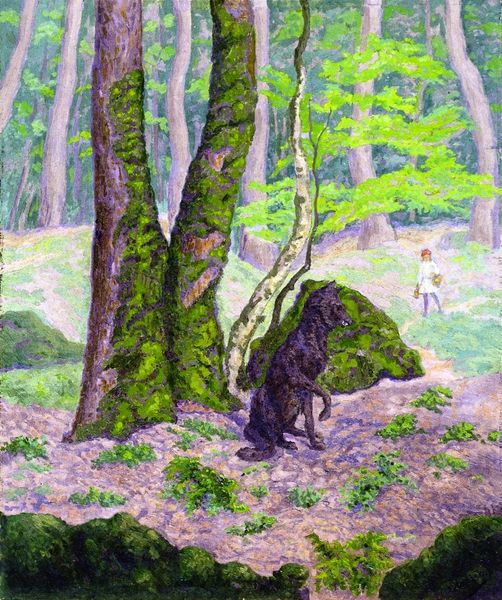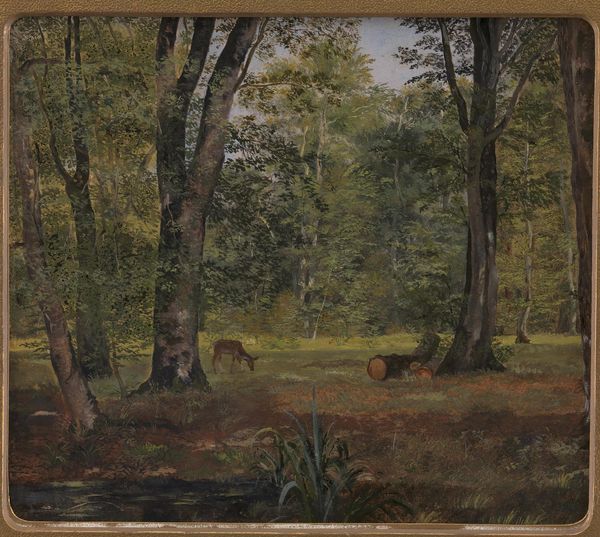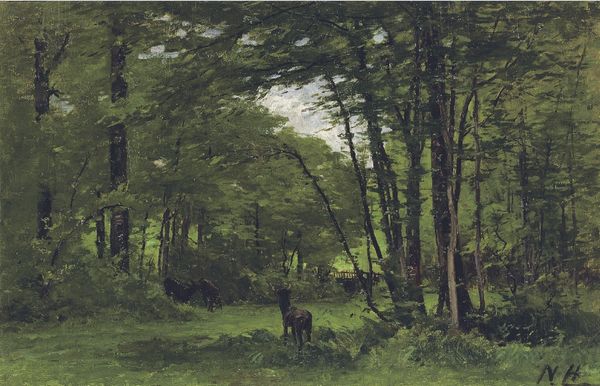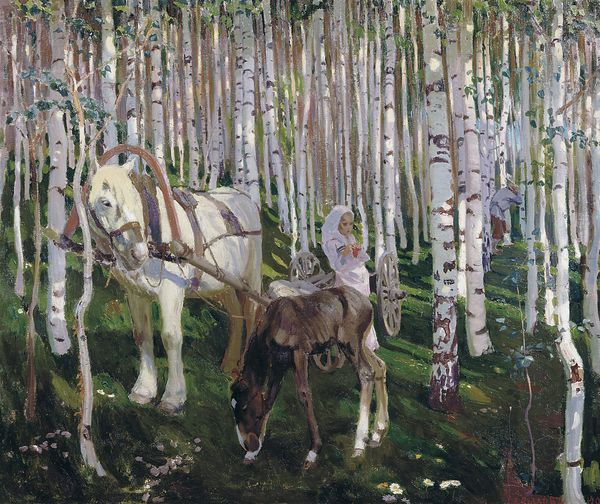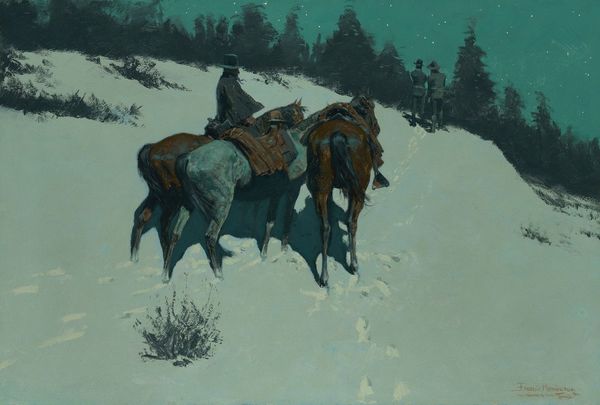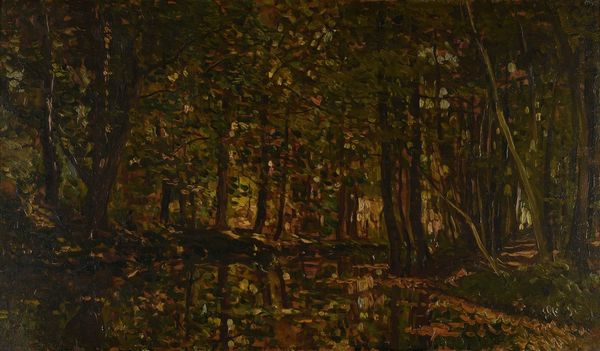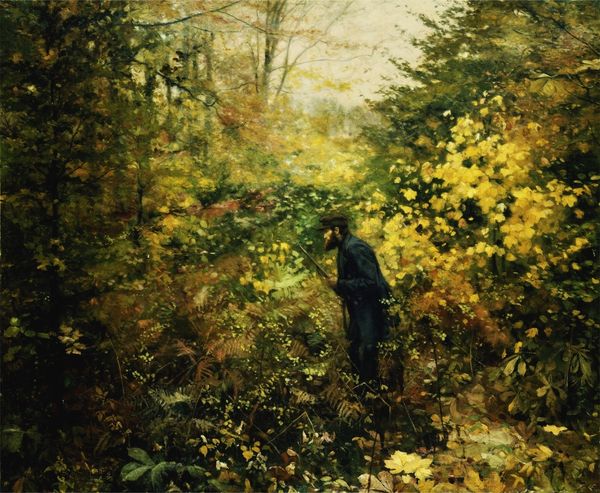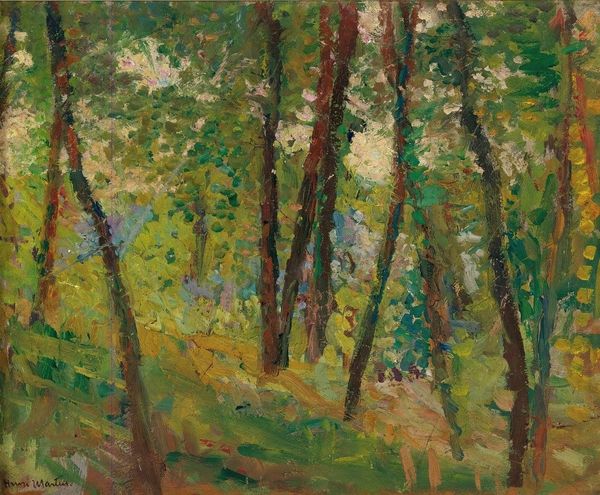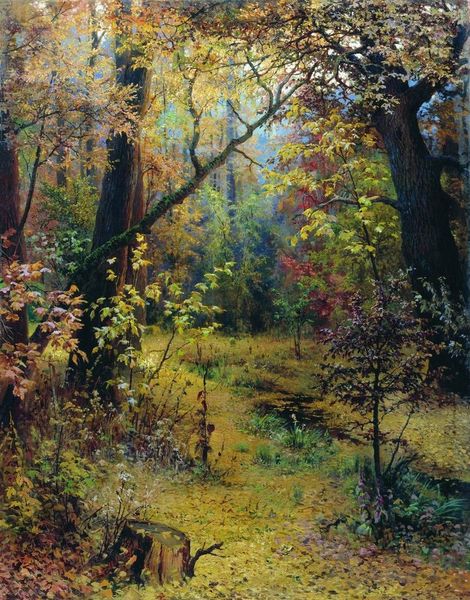
watercolor
#
landscape
#
impressionist landscape
#
nature
#
watercolor
#
realism
Copyright: Public Domain: Artvee
Editor: So, here we have Winslow Homer's watercolor, "On the Trail," from 1889. I’m immediately struck by how the loose brushstrokes capture this dense, almost claustrophobic feeling of being lost in the woods. What do you make of it? Curator: It whispers a bit, doesn't it? Homer’s not just painting trees and a hunter with his hounds; he’s inviting us to step into that cool, damp, earthy world. For me, that muted palette isn't dreary, it's humming with the untold secrets and subtle movements of a hidden world, what is your opinion? What I see here is an almost uncanny mirroring, in this scene of hunter and hounds navigating the terrain, between nature's rhythms and our own relentless human drive. A delicate dance between exploration and intrusion. Editor: That’s interesting, I hadn’t thought about it like that. I was focused on the visual chaos, I suppose, all the leaves and branches. The scene doesn’t really draw my eyes to a focal point, beyond perhaps the dogs and hunter. Curator: Ah, but isn't that the magic of the moment? Real life rarely offers tidy compositions or spotlighted drama. Maybe Homer is making a quiet observation of human purpose in face of Nature's vast indifference. How often are we really the stars of our own stories, and how often are we simply passing through? Almost transparent? Editor: You’ve definitely given me a different perspective on Homer's work, especially the mirroring. I am curious to do further research on Homer’s use of that muted palette to create those subtle and powerful emotional impacts. Curator: Wonderful, keep questioning, keep looking, and I have no doubt art will always open new paths and perspectives.
Comments
No comments
Be the first to comment and join the conversation on the ultimate creative platform.
